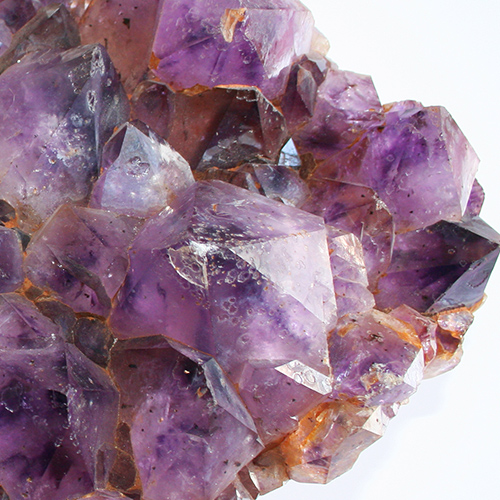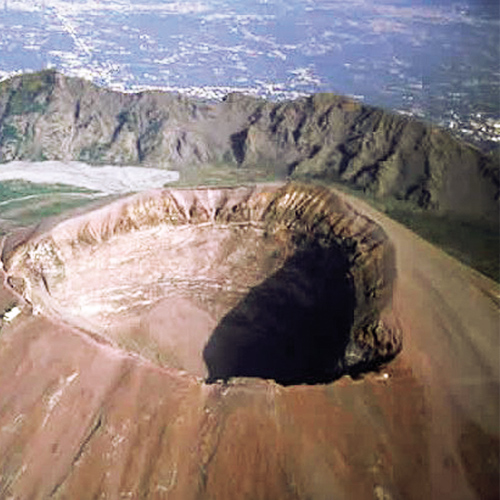Minerals from the world
There are more than 3500 minerals of 1400 varieties on show and they come from all over the world. The mineral collection is housed in 24 display cases throughout two rooms of the museum. Several of them have been donated by scholars both in Italy and abroad. Some sections worthy of note are those dedicated to the Vesuvian minerals, containing rarities such as lapis lazuli from Monte Somma and a number of splendid vesuvianite crystals, some of which were discovered after the last eruption of 1944.

3500 minerals from all over the world…
A few of the samples in exhibition
The criteria adopted in deciding where to put the specimens were based on their crystal chemical classification, according to which there are nine classes (native elements, sulphides, halides, oxides, carbonates, sulphates, phosphates, silicates¸ organic compounds).
Visitors can also see a number of meteorites, extra-terrestrial bodies of varying chemical composition, that fell to earth in different parts of the planet in different periods. Typical of these is the chalcedony geode, with its trapped fossil water; it was discovered in Brazil and donated by painter Armando De Stefano.
One whole display case is dedicated to quartz in its various shapes and colours. Larger minerals belonging to the various sections in the vertical display cases are displayed on a counter. Worthy of particular mention are some splendid specimens of albite and tourmaline, desert rose and obsidian (volcanic glass).
Finally, there is a display case dedicated to fluorescent minerals which, under ultraviolet light, take on the most spectacularly garish hues.
Agata Blu (Geode)
Agata Blu
Agata
Ametista (Brasile)
Calcedonio
Cristalli di Quarzo
Dendrite di Manganese
Dioptasio, Sud Africa
Flogopite
Granato (Austria)
Malachite
Nodulo di agata
Shattuckite (Usa)
Geode di Calcedonio con acqua fossile
Amazzonite (USA)
Acquamarina
Aragonite
Berillo (Brasile)
Crocoite
Cubo di Pirite
Fluorite (ottaedro)
Okenite
Lapislazzuli (Russia)
Kammerite (Turchia)
Quarzo e Rodocrosite
Quarzo
Okeniti e Zeoliti
Prehnite (USA)
Tormalina
Minerali vesuviani
There are about 230 Vesuvian minerals: fumarolic, pneumatolictic and metamorphic. The classic mineral is ‘Vesuvianite’, discovered for the first time on Monte Somma. The most common are Augite, Leucite, Mica Muscovite and Olivina. Many take their names from scholars, for example: Covellite, Monticellite, Ferrucite, Scacchite, and others.

Minerals ffrom Vesuvius are about 230…
La collezione del museo
In the Mineralogical Museum of Campania around 100 examples of minerals are exhibited, both from Vesuvius and the Campania region. Other minerals can be seen in Naples in the museum at the University of Federico II and at the museum “G.B. Alfano” of Pompei.

